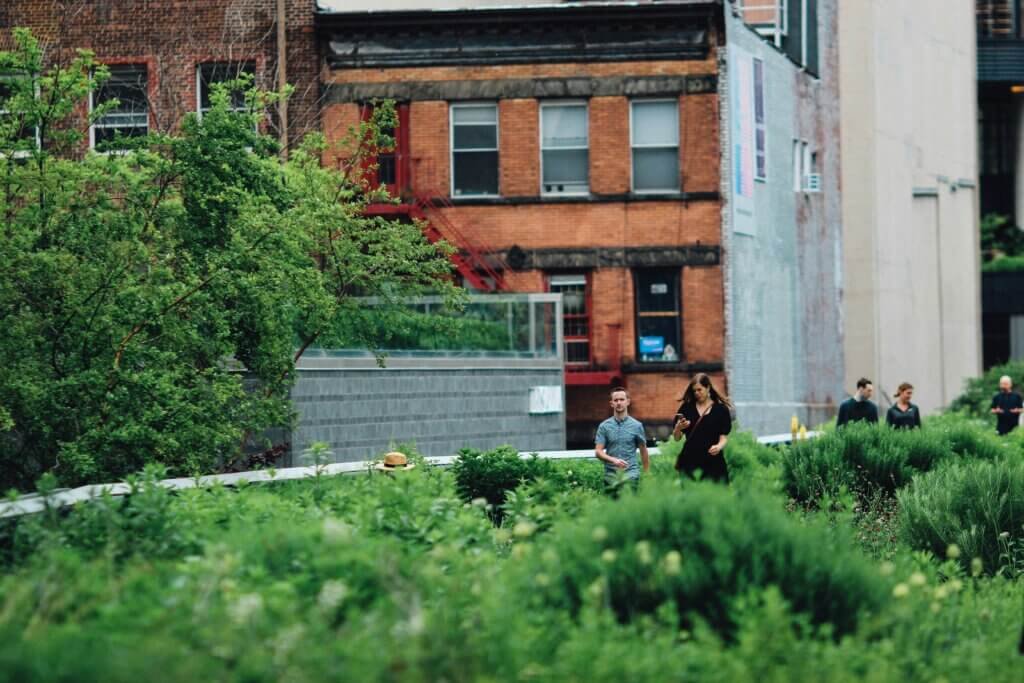Are you passionate about environmental sustainability and social change? Look no further than urban gardening as a form of activism. In an increasingly urbanized world, urban gardening offers a unique way to connect with nature, promote community engagement, and advocate for food justice. By utilizing unused spaces to grow plants, flowers, and vegetables, urban gardeners can transform their cities into thriving green oases. This article explores the significance of urban gardening as a form of activism and its positive impact on both the environment and society.

The Importance of Urban Gardening
Urban gardening is a growing movement that holds significant importance in addressing various societal issues. One key area where urban gardening plays a vital role is in addressing food insecurity. With an increasing global population and limited resources, ensuring access to healthy and affordable food is becoming a significant challenge. Urban gardening allows individuals and communities to grow their own fruits, vegetables, and herbs, reducing their reliance on traditional food systems. By cultivating their own food, people can have a sustainable and reliable source of nutrition, contributing to their overall well-being.
Promoting sustainability and environmental awareness is another crucial aspect of urban gardening. Traditional agriculture often involves the use of chemicals and large-scale machinery, leading to environmental degradation. Urban gardening, on the other hand, emphasizes organic and sustainable farming practices, such as composting and rainwater harvesting. By practicing these sustainable methods, urban gardeners contribute to preserving the environment and promoting a more eco-friendly lifestyle.
Furthermore, urban gardening has been proven to have a positive impact on mental and physical health. Engaging in gardening activities can reduce stress, anxiety, and depression, while also providing opportunities for physical exercise. The connection with nature and the sense of accomplishment from growing one’s food can boost overall well-being and improve mental health. Additionally, urban gardening encourages individuals to spend time outdoors and engage in physical activity, which is particularly important in urban areas where access to green spaces may be limited.
Political and Social Implications of Urban Gardening
Urban gardening also carries powerful political and social implications. By challenging corporate control of food, urban gardening empowers individuals and communities to take control of their own food production. Large corporations often dominate the food industry, leading to homogeneous and unsustainable practices. Urban gardening allows communities to diversify their food sources and reduce their dependence on corporate-driven food systems. It disrupts the status quo and encourages a shift towards a more decentralized and community-centered approach to food production.
Another significant impact of urban gardening is the building of community and social connections. When people come together to cultivate shared urban green spaces, they form bonds and strengthen social connections. Community gardens foster a sense of belonging and create spaces for interaction and cooperation. They provide an avenue for people from diverse backgrounds to come together, share knowledge and resources, and build stronger communities. The support and camaraderie that arise from these interactions can have a profound impact on the overall social well-being of individuals and communities.
Urban gardening also plays a role in promoting social justice and equity. In many urban areas, access to fresh and nutritious food is unequal, with marginalized communities often facing food deserts and limited options for healthy eating. By establishing community gardens in these underserved areas, urban gardening becomes a tool for promoting social justice. It empowers these communities by giving them the means to produce their own food and ensuring access to healthy options. Additionally, urban gardening can serve as a platform for advocating for equitable distribution of resources and challenging systemic inequalities.

Advocacy and Awareness through Urban Gardening
Urban gardening offers various opportunities for advocacy and raising awareness about food-related issues. Educational programs and workshops are one effective way to engage and empower individuals. By providing knowledge and practical skills, these programs enable people to become more self-sufficient and make informed choices about their food consumption. Workshops on topics like organic gardening, permaculture, and sustainable agriculture can equip individuals with the tools they need to actively participate in urban gardening and promote positive change within their communities.
Collaboration with local organizations is another crucial aspect of urban gardening activism. By partnering with local nonprofits, community centers, and schools, urban gardeners can extend their reach and impact. These collaborations can involve organizing joint events, conducting educational programs, and sharing resources and expertise. By working together, urban gardening activists can create a stronger collective voice and maximize the impact of their initiatives.
Another powerful method of advocacy and engagement is through public art and community engagement. Using urban gardening spaces as canvases for art installations and murals raises awareness about food-related and environmental issues. These visually appealing displays not only attract attention but also serve as conversation starters, sparking discussions about the importance of sustainable and healthy food systems. Moreover, involving the local community in the design and creation of these art installations fosters a sense of ownership and pride, further fueling community engagement and activism.
Urban Gardening as a Catalyst for Policy Change
Urban gardening has the potential to drive policy change at the local and city level. By advocating for local food policies, urban gardening activists can influence the development of government regulations and guidelines related to urban agriculture. These policies can range from supporting community gardens through land access and zoning regulations to providing incentives for sustainable farming practices. By actively engaging with policymakers and sharing their expertise, urban gardening activists can shape policies that promote food security, sustainability, and community well-being.
In addition to advocating for local food policies, urban gardening can influence urban planning and design. By demonstrating the importance of green spaces and community gardens, activists can challenge the traditional urban landscape dominated by concrete and buildings. Urban gardening initiatives can inspire city planners to integrate green spaces and urban agriculture into the design of future neighborhoods, parks, and public spaces. By incorporating urban gardens into urban planning, cities can create more sustainable, resilient, and inclusive environments for their residents.
Engaging with city officials and decision-makers is another critical strategy for urban gardening activists. By actively participating in public meetings, forums, and town halls, activists can present their ideas and concerns directly to those in power. This engagement allows activists to share their experiences, highlight the benefits of urban gardening, and advocate for policy changes. By building relationships with city officials and demonstrating the positive impact of their initiatives, urban gardening activists can gain support and cooperation from key stakeholders, further solidifying their position as agents of change.

Examples of Successful Urban Gardening Activism
Several examples of successful urban gardening activism demonstrate the power of grassroots movements in driving change. The Guerrilla Gardening Movement, for instance, has gained widespread recognition for its innovative approach to reclaiming neglected urban spaces. Guerrilla gardeners covertly transform derelict areas into lush green gardens, often using guerrilla tactics to overcome legal and bureaucratic barriers. These acts of activism not only beautify urban areas but also challenge prevailing notions of land use and ownership. The Guerrilla Gardening Movement demonstrates the potential of creative, decentralized activism in reclaiming public spaces and promoting urban agriculture.
Another notable example is the rise of urban farming collectives. These collectives bring together individuals with a shared passion for urban agriculture and sustainability. By pooling resources, knowledge, and labor, these groups establish and maintain larger scale urban farms. Urban farming collectives go beyond personal gardening endeavors and embrace a collaborative approach to increase their impact. These initiatives often involve partnerships with community organizations, schools, and local businesses, creating a network that supports food production, education, and community engagement.
Transforming abandoned spaces into community gardens is yet another powerful example of successful urban gardening activism. Cities, especially those with a history of industrial decline, often have pockets of abandoned land that lie vacant and neglected. Urban gardening activists have seized these opportunities and transformed these wastelands into thriving community gardens, bringing life and purpose back to these spaces. These community gardens not only provide fresh produce to local residents but also serve as gathering places for the community, fostering a sense of belonging and revitalizing neighborhoods.
Challenges and Limitations of Urban Gardening Activism
While urban gardening activism has numerous benefits, it also faces several challenges and limitations. One of the primary obstacles is the limited access to land and resources. In densely populated urban areas, finding available land for gardening can be a significant hurdle. The lack of suitable spaces for community gardens often requires activists to be creative, such as utilizing rooftops or converting vacant lots. Additionally, securing funding and resources to establish and maintain community gardens can be a daunting task, requiring ongoing support and collaboration with local organizations and government agencies.
Another challenge associated with urban gardening activism is the potential for gentrification and displacement. As communities become more engaged in gardening initiatives and create thriving green spaces, property values may increase, and the cost of living can rise. This can lead to the displacement of low-income residents who may no longer be able to afford housing in these areas. Balancing the benefits of urban gardening with the need to ensure equitable access and affordability for all residents is crucial to addressing this challenge and achieving social justice.
Institutional barriers and regulations can also pose significant challenges for urban gardening activists. Existing zoning laws and land use regulations may pose obstacles to establishing community gardens or urban farms. Navigating complex bureaucratic systems and obtaining necessary permits can be time-consuming and cumbersome. Advocacy for streamlined regulations and policies that support urban agriculture is essential to overcome these barriers and ensure that urban gardening initiatives can thrive.

Case Studies of Urban Gardening Activism
Examining case studies of successful urban gardening activism provides valuable insights into the impact of these initiatives.
One notable case study is Detroit’s urban farming movement. In recent years, Detroit has faced economic decline and high levels of vacant land. Urban gardening activists have seized this opportunity to transform abandoned lots into thriving urban farms. These urban farms not only provide fresh produce to local residents but also help stimulate the local economy by creating job opportunities and fostering entrepreneurship. The Detroit case study showcases the potential of urban gardening to revitalize communities, address food insecurity, and strengthen urban resilience.
Oakland’s food justice initiatives offer another compelling case study. Oakland, California, has a long history of racial and economic disparities, with certain neighborhoods experiencing limited access to affordable and healthy food options. In response, urban gardening activists and community organizations have developed a comprehensive approach to address these issues. From establishing community gardens to advocating for policy changes, Oakland’s food justice initiatives emphasize the importance of equity and community empowerment. This case study demonstrates how urban gardening can be a catalyst for social change and equity in marginalized communities.
Berlin’s urban gardening projects provide a unique perspective on urban gardening activism in a European context. Berlin has a vibrant urban gardening scene, with a diverse range of initiatives, from rooftop gardens to innovative vertical farming systems. These projects not only focus on food production but also emphasize sustainable practices, environmental education, and community engagement. Berlin’s case study showcases the power of urban gardening to transform urban landscapes, promote environmental awareness, and foster community cohesion.
Success Factors and Strategies for Urban Gardening Activism
Building strong networks and partnerships is a key success factor in urban gardening activism. Collaborating with local organizations, community centers, and schools expands the reach and impact of gardening initiatives. By sharing knowledge, resources, and expertise, urban gardening activists can leverage collective strengths and maximize the effectiveness of their efforts.
Advocating for policy and systemic change is another critical strategy in urban gardening activism. By actively engaging with policymakers and decision-makers, activists can shape regulations and guidelines related to urban agriculture. By emphasizing the benefits of urban gardening, such as food security, sustainability, and community well-being, activists can influence policies that support and promote these initiatives.
Scaling up and replicating successful urban gardening initiatives is essential to achieve broader impact. By sharing best practices and lessons learned, activists can inspire and empower others to start their own gardening projects. This replication of successful initiatives not only expands the reach of urban gardening but also creates a sense of unity and collective action.

The Future of Urban Gardening as Activism
Looking ahead, urban gardening has the potential to foster global movements and networks. With increasing awareness about the environmental and social consequences of our food systems, urban gardening can become a catalyst for change on a global scale. By connecting activists, organizations, and communities from different parts of the world, a global movement can advocate for sustainable and equitable food production, challenging existing power structures and promoting environmental stewardship.
Integrating technology and innovation is another exciting avenue for the future of urban gardening activism. From vertical farming systems to hydroponics, technology can revolutionize urban agriculture and make it even more efficient and accessible. Integration of digital tools, such as online platforms for sharing knowledge and resources, can facilitate global collaboration and knowledge sharing among urban gardening activists. Embracing technology and innovation can propel urban gardening activism into the mainstream and increase its impact.
The integration of gardening into urban infrastructure holds immense potential for the future of urban gardening activism. From green roofs on buildings to vertical gardens on walls, incorporating gardening spaces into urban design can create a harmonious and sustainable coexistence between nature and cities. By reimagining urban spaces as multifunctional and sustainable, urban gardening can become an integral part of urban planning, contributing to healthier and more resilient cities.
Conclusion
Urban gardening activism serves as a powerful tool for addressing food insecurity, promoting sustainability, improving mental and physical health, and advocating for social justice. By challenging corporate control of food, building community connections, and engaging in advocacy efforts, urban gardening activists are driving change at the local, city, and global levels. While facing challenges such as limited access to land and resources, potential gentrification, and institutional barriers, urban gardening activists continue to make a significant impact through successful initiatives and case studies. By embracing collaboration, advocating for policy change, and replicating successful models, urban gardening activism can shape a future where sustainable and equitable food systems are the norm. With the integration of technology and innovation, as well as the incorporation of gardening into urban infrastructure, the potential for urban gardening as activism is boundless. As more individuals and communities embrace urban gardening, the movement gains strength and momentum, making a lasting impact on our society, environment, and well-being.


